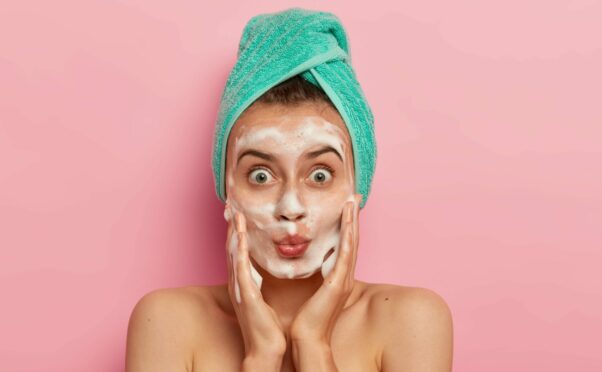
From moisturisers and serums to scrubs and vitamin-enriched oils, skincare products have never been more popular.
In fact, Google searches for “skincare” have increased by more than 220% in the UK since 2004, proving more and more of us are switching away from simply soap and water.
For new converts, it can be tempting to buy the latest wonder product and hope for the best, but what works for one complexion might not for another.
To help you make the most of your spend in Boots or Superdrug, here, skincare expert and NHS GP Dr Raj Arora shares her advice for budding skincare enthusiasts.
Cleanse correctly
Every day, your skin comes into contact with bacteria and dirt, so a good cleanser is the first step in any routine.
Arora explained: “It’s important to find a cleanser that suits your skin type, otherwise it can exacerbate certain conditions. Those with dry or mature skin, should opt for a milky cleanser or one that contains moisturising glycolic. Otherwise, the product could further dry out the skin, causing peeling, flakiness, and irritation.
“For acne-prone or oily skin, stick to gel-based cleansers containing benzoyl peroxide or salicylic acid. And, if you suffer from brown spots or hyperpigmentation, use an alpha hydroxy cleanser.”
Less is more
“One of the biggest mistakes you can make when building your routine is layering on too much product,” continued Arora. “Start with cleanser, moisturiser and SPF, then build as you see fit. Additional steps can include face masks, tailored serums and other active ingredients.
“Focus on lightweight broad-spectrum 50+ SPF sunscreens to prevent breakouts, and try to avoid ‘2 in 1’ products, such as foundation with SPF, as they rarely go the extra mile to protect the skin well enough.”
Read the label
Do you pick up a new product because of the brand name or packaging? Think again.Arora said: “A label will tell you everything the product is intended to do, who it’s for, what ingredients are included, and how to use it most effectively. If you’re unsure about any ingredients, do your research before purchasing.”
Look, don’t touch!
She added: “Sometimes we don’t need to invest in new products, but change our habits. If you’re prone to oily skin, touching the face can aggravate the presence of oil, clogging pores. For others, touching the face can contribute to the look of wrinkles and fine lines, so it is important to break the habit at a young age.”
Visit thefacebible.com

Enjoy the convenience of having The Sunday Post delivered as a digital ePaper straight to your smartphone, tablet or computer.
Subscribe for only £5.49 a month and enjoy all the benefits of the printed paper as a digital replica.
Subscribe